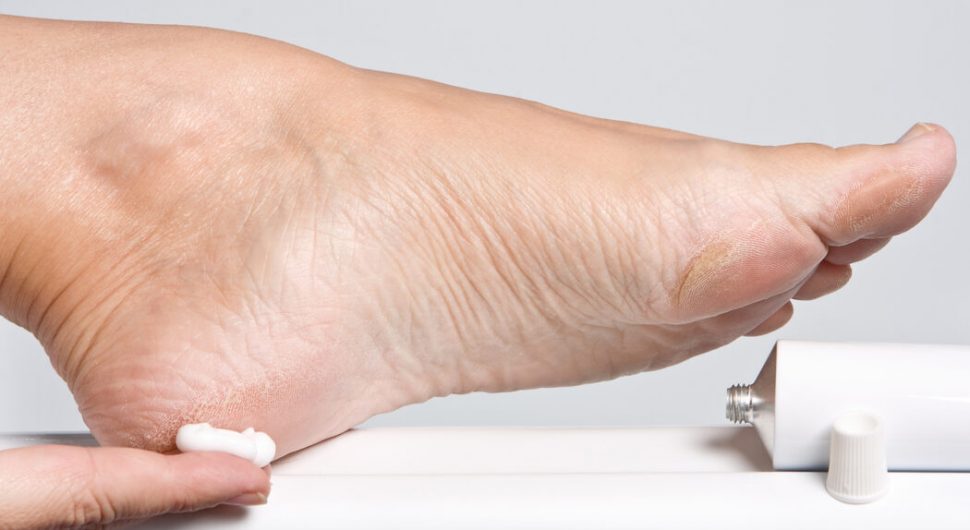It’s coming up on sandal season….are your feet ready? Or are you suffering from thick heels, long nails, super dry skin, and embarrassed to show your feet in public?

During winter months, we typically spend more time indoors, wearing fuzzy socks and blasting the heat. While it may be cozy and comfortable at the time, it can be doing some damage to your feet in the form of dry skin and cracked heels. Dry skin is not uncommon during the winter, and the colder air, combined with the increased indoor temperatures, often leaves your feet dehydrated and begging for moisturizer.
The next question is- how do you treat it, and how do you prevent it from continuing to happen?
First of all, it is important to ensure that you do not have an underlying medical condition contributing to your foot issues. Sometimes, dry skin and cracked heels are linked to psoriasis, eczema, diabetes, thyroid issues, or biomechanical concerns such as flat feet or heel spurs.
The temperature of your shower or bath is another consideration. Hot water can damage keratin in the outer layer of your skin, preventing skin cells from retaining moisture. A cool or warm shower is always best for your skin.
Do you soak your feet? Research shows that foot soaks can have relaxing and soothing benefits, but can also contribute to dry skin. Foot soaks should be in warm water, and for no longer than 10 minutes a couple of times a week. Epsom salts in the water can also help with exfoliation of dead skin cells.
How about thick, calloused and cracked heels? There are a number of factors that can contribute to split heels, including dry skin secondary to extreme temperatures (either hot or cold), diabetes- which can impair blood flow, barefoot walking, obesity, the use of harsh soaps and cleansers, standing for long hours and wearing shoes that are ill-fitting. But there are also ways to manage this before it begins to cause soreness and discomfort, and interfere with your quality of life.
Our certified foot care nurses can help you manage dry skin and cracked heels, especially if you have difficulty reaching your feet safely; have issues with your eyesight and cannot see your feet properly; if you are considered high risk (if you have diabetes, are taking blood thinning medication, an oncology client, etc.); or if you have broken skin on your feet. You likely require more specialized care and treatment than you can provide yourself at home. We can file and remove calloused skin that causes cracked heels, and recommend products that will help keep things under control, which in turn, leads to happier, healthier feet.

